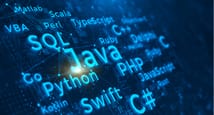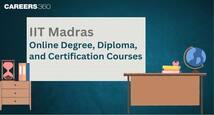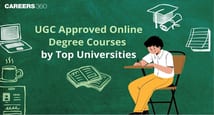- Splitting the model into boundaries and flagging these boundaries
- CAD import and cleanup
Advanced Aerodynamic Simulations using CONVERGE
Learn to set up Advanced Aerodynamic Simulations by making use of Converge CFD with Skill Lync’s Advanced Aerodynamic ...Read more
Beginner
Online
12 Weeks
Quick Facts
| particular | details | |||
|---|---|---|---|---|
|
Medium of instructions
English
|
Mode of learning
Self study, Virtual Classroom
|
Mode of Delivery
Video and Text Based
|
Course overview
For candidates who are looking for a course that would help them to learn as well as practice the procedure of setting up Advanced Aerodynamic Simulations with the help of Converge CFD, this course of Advanced Aerodynamic Simulations by Skill Lync is the best. The duration of this course is about 12-week long. The contents of this course will train you in various areas starting from the basics by utilising simple applications, for example, flow through a pipe, to the ability of visualizing flow over an Ahmed body and FSAE car. Students graduating from this course will be equipped with skills by making them face challenges, complete projects, and exercises, and will be provided instructions about how to use Converge CFD to set up these simulations to gain the desired results.
Computational Fluid Dynamics is also used by car manufacturers to visualize the flow around the models of the cars produced by their companies. Skills procured from this course will go a long way in the career as well as personal development of the candidates.
The highlights
- 100% learning through online mode
- Proper technical support for doubt resolution
- Certification of completion provided by Skill Lync
- 12 weeks long course duration
Program offerings
- Industry-oriented projects
- Course videos
- Technical support
- Weekly assignments
Course and certificate fees
The fees for the course Advanced Aerodynamic Simulations using CONVERGE is -
| Head | Amount |
| Programme fees | Rs. 40,000 |
certificate availability
Yes
certificate providing authority
Skill Lync
Who it is for
This course is beneficial for the following:
- Candidates who are students in the field of Mechanical, Aerospace, or Automotive engineering
- Students of undergraduate degrees who want to gain knowledge in the field of aerodynamics.
- Students who want to learn to set up Aerodynamic simulations from scratch
Eligibility criteria
Education
It is necessary for the candidates to graduate from B.E/B.Tech degree in the field of Mechanical, Aerospace or Automotive Engineering. The candidates are required to have basic knowledge of Converge CFD.
Certification Qualifying Details
Candidates in the top 5% of the classroom will be rewarded with a certificate of merit. All other candidates will be given a course completion certificate.
What you will learn
Graduates of this course will gain the following from this course:
- Candidates will be assessed with real-world challenges
- Candidates will be able to learn to use CONVERGE CFD to set up simulations
- Candidates will be able to learn Paraview for the process of post-processing of results
- Candidates will be able to learn the working procedures of engines
- Candidates will be able to apply Computational Fluid Dynamics to real-life challenges
- Candidates will cover all fundamentals from the basic to the complicated concepts
- Candidates will be able to visualize the flow an Ahmed body
- Candidates will be able to visualize flow over FSAE car
The syllabus
Week 1 : Preparing the surface for flow simulation
Week 2 : Setting up the simulation
- How to choose the right turbulence model? K-Epsilon Vs. K-Omega SST
- Understanding Y+ and choosing suitable grid sizes for our simulation
- Creating Virtual Wind Tunnel
- Setting the boundary conditions effectively
Week 3 : Physics Modelling
- Conjugate Heat Transfer
- Shock Capturing
- Turbulence Modelling
Week 4 : Extracting Aerodynamics Quantities
- Understanding the wake and the effect this will have on the aerodynamic parameters
- Extracting information such as drag and lift force from Converge CFD
Admission details
Following are the simple and directive steps that have been provided for the candidates for easy admission in the course of Advanced Aerodynamic Simulations:
Step 1: Go to the course home page.
Step 2: An ‘Enroll Now’ button is there which needs to be clicked. You will be required to choose your desired plan for the programme. After choosing your plan, proceed by clicking on ‘Enroll now’ again.
Step 3: A popup is going to appear on the screen. Fill in your login credentials to proceed further.
Step 4: To become eligible for this course, complete your payment.
How it helps
A number of benefits can be found by the candidates taking this course of Advanced Aerodynamic Simulations by Skill Lync. The candidates taking up this course will be working considerably on projects that are of great relevance to the industry as well as get to know about the different tools and software that will help the candidates to make a mark on society and set them apart from other colleagues in the organisation. It will also help the candidates to get ahead in the race of life and be successful. This course will make sure that the candidate’s portfolio gets strengthened that will help them get better employment opportunities, ultimately resulting in a higher pay scale. The candidates can even apply for scholarships for MS Audits. The candidates can also choose to venture into the research and development fields or apply for top-notch companies.
The Technical Support team provided by Skill Lync will provide help to the candidate anytime and anywhere the candidate raises queries. The team will make sure that the doubts get resolved for a better understanding that will result in a better understanding of concepts. This course provides theoretical knowledge as well as the expertise to apply this knowledge to practical use.
FAQs
What are the different projects that the students will be working on?
The students will be working on the following projects:
- Flow over an Airfoil
- Flow over an Ahmed Body
- Flow over an FSAE Car
What are the software tools that the students will work with?
The students will be given a license to access the software CONVERGE CFD.
How will the doubts that arise get solved?
The student can raise tickets after which the technical support will get to the student to resolve the doubts. The students can also ask the instructors to share their screens for a better understanding of the concepts.
For the ease of the candidates, WhatsApp support as well as interaction with the batch.
Are there any educational prerequisites?
A degree of B.E/B.Tech in Automotive, Aerodynamic, or Mechanical Engineering is a prerequisite of taking this course.
What are the different modes of study offered to the students?
Pre-recorded courses are given to the students almost instantly after they purchase the course. Along with this, they are also given weekly assignments that will be evaluated by experts. The students will be working on live projects that will help them in their careers.
Give some details about the certification provided.
To all the students that complete the course, a certification will be provided. However, the top 5% of students will also be provided with a certificate of merit. This e-certificate can be linked-to sites like LinkedIn to gain employment opportunities.
What software will this course cover?
Software like CMD, CYGWIN, CONVERGE CFD, and ParaView will be covered in this course.
Mention some advantages of this course.
The various advantages of taking this course from Skill Lync learning skills that are industry-relevant, job-leading curriculum, technical support that are dedicated to the students, project-based learning as well as continual learning with the help of workshops and live webinars.
What is Paraview?
Paraview is used as a post-processing software that allows the candidates to not only post-process results but also create animations, analyse results, and see the mesh.
What will you learn during the project ‘flow over an Airfoil’?
The learning outcomes of the project ‘flow over an Airfoil’ consist of predictions of lift and drag from different angles and the effect that the turbulence model has on flow separation.
Articles
Popular Articles
Similar Courses
Courses of your Interest

Theory Of Computation
IIT Kanpur via Swayam

Basics of CATIA V5
Skill Lync

Introduction to Urban Geo Informatics
The Hong Kong Polytechnic University,... via Edx

Urban Design for the Public Good Dutch Urbanism
Delft University of Technology via Edx

Digitalization of Intelligent and Integrated Energ...
Delft University of Technology via Edx

Monotsukuri Making Things in Japan Mechanical Engi...
Institute of Science Tokyo, Tokyo via Edx

Model Based Systems Engineering Foundations
IsraelX via Edx

So You Want to Be a Biomedical Engineer
UC San Diego via Edx
More Courses by Skill Lync

Advanced CFD Meshing using ANSA
Skill Lync

Embedded C Essentials
Skill Lync

Introduction to Automotive Electronics
Skill Lync

Reinforced Cement Concrete Design
Skill Lync

Construction Planning using Primavera P6
Skill Lync

Business Analyst Fundamentals for Beginners
Skill Lync

Network RAN Performance and Optimization
Skill Lync


 Brochure
Brochure Enquire
Enquire














